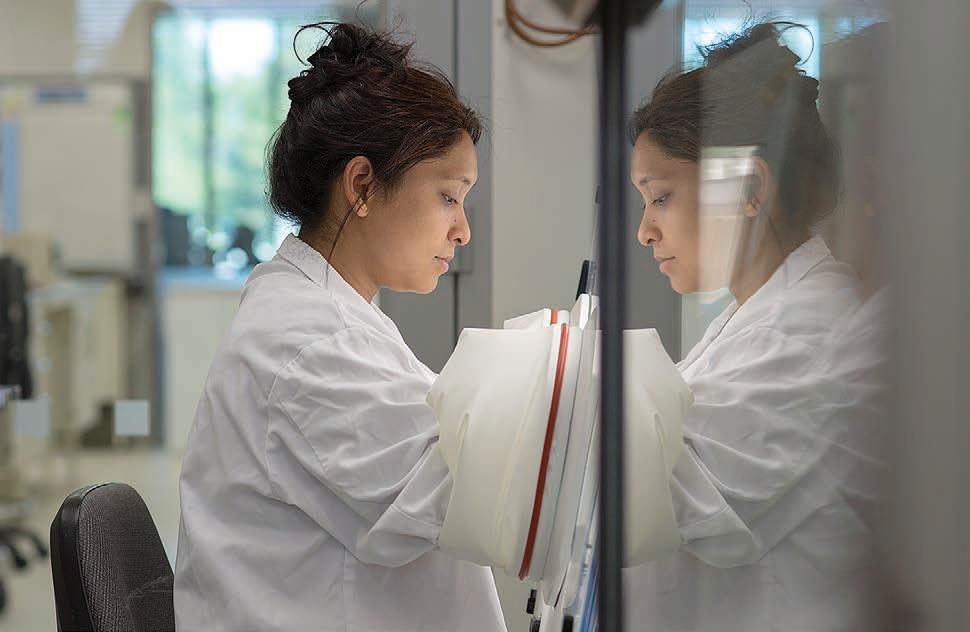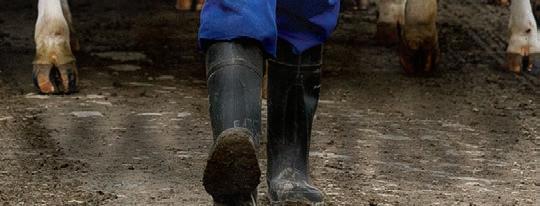
4 minute read
Surprise prize
by AgriHQ
By Greg Ford
An AgResearch scientist’s award-winning research has confirmed her rising-star status in the world of microbiology.
When an email landed in Tanushree Gupta’s inbox from an unknown overseas sender claiming she was a finalist for a prestigious award, she thought it was a scam.
The AgResearch microbiologist had only recently returned from a longoverdue catch-up with family in India and was recovering from jet lag and a travel bug.
“I was still sick and not really thinking straight. I read that email and I just closed it off thinking this must be a scam. Then, when I just got my mind sorted ... I did some investigating.”
The email was real and her work identifying natural bacterial metabolites that can be used as food preservatives or antimicrobials with commercial potential was in fact, award-winning research.
The email was followed by another a few days later saying not only was she a finalist, she’d won the Basil Jarvis Prize at the Applied Microbiology Awards.
“I couldn’t believe it and needed to look at [Applied Microbiology International’s] Facebook and Linked In pages and through a few people profiles before I’d let myself think maybe it was legitimate.”
She broke the news to her team leader, Gale Brightwell, and they discovered the award came with an all-expenses-paid trip to the ceremony in London. Within a few days of thinking she was being scammed, she was rubbing shoulders with the best microbiologists in the world at the Science Museum in swanky South Kensington.
She’d entered with no specific hope other than bringing her work to the attention of people who might be interested in funding it.
“We spend a lot of time in proposal writing and not getting anything. This time there were a lot of happy tears because people were noticing our work. The event was full of great scientists, and I had so many great conversations, which I have continued after the event over
LinkedIn. Most importantly, I was proud of representing AgResearch and New Zealand there.”
Gupta stresses the word “our”. The award, she says, reflects the work her team does.
“The method development for which I won the award took almost a year with constant work, including weekends. It was during the time that I found my niche in the team. My PhD students played an important part. The method was a core part of their research.
“Dr Amila Nawarathna helped find natural antimicrobials from anaerobic bacteria and Alexis Risson helped identify spoilage and pathogenic spore-forming bacteria in sheep milk. My team leader, Gale Brightwell, also encouraged me to pursue these crazy ideas.”
A few years ago, she and her team became aware of the shortcomings in some of the internationally accepted and published bacterial testing regimes they were using, particularly in a dairy environment, which provided an opportunity to come up with some answers to a complex problem.
“We started to recognise that not all the recognised processing conditions for killing or stopping the growth of sporeforming bacteria were working as well as they might. When bacteria are in the form of spores, they are highly robust and resilient to environmental conditions, including processing technologies and heat. This was a problem in a New Zealand context because we wanted to look at what and where are higher numbers or a prevalence of these spore- forming bacteria on a dairy farm.

“We’d take samples from feed, soil, silage, maze, grass or whatever feed was fed to the animals, including swabs from milking cups and raw milk as well. From that I had that whole continuum, from one end to the other, with the aim to grow bacteria from those samples on a specific media, see the morphology of the bacteria, and then do the phenotypic analysis to find out what these bacteria are.
“We used the lab manual and methods used in papers.
“We used media with egg yolk to isolate Clostridium species and incubated bacteria using other specific media aerobically to kill off the Bacillus.
“But we couldn’t get a clear demarcation even when using the method to get the growth of anaerobic bacteria under anaerobic conditions.
“Some of the bacteria were actually able to change their metabolism and grow in the absence of oxygen as well. They were growing anaerobically. Some of them were proliferating so happily that they were all over the media and I could not identify or isolate species”.
Her background placed her in a unique position to help tackle the problem. Initially, she’d planned to be a food technologist.
“I did a Master’s thesis at Punjabi University looking into designing different vector systems which would produce antimicrobials in certain bacterial strains.
“I got a role as a research fellow in the National Dairy Research Institute in India, where I worked with enzyme technology for the dairy industry. And after that I thought that is what I am going to do.
“But then I got this really cool opportunity to study antibiotic resistance in nosocomial pathogens, which were circulating in hospitals.”
She did her PhD in antibiotic resistance and now at AgResearch has found her niche working with sporeforming bacteria in the food chain, whether it’s meat or dairy.

“And because I know how to adapt, I’m also moving into new areas, such as animal health, which is a very important area to focus on, especially when we talk about facial eczema.”
Her food and medical microbiology research, coupled with hands-on lab experience, inspired her to create a new method to differentiate bacteria.
The “textbook” method to distinguish anaerobes and aerobic bacteria wasn’t effective in a New Zealand farm context.

So they started isolating those anaerobic species and then whole genome sequencing them.
“We grew them individually or together. We tested the efficacy against different food pathogens and against different food spoilage microorganism, fungus as well. Through a lot of hard work we found the specific anaerobic bacteria that were untouched, that had the ability to produce antibacterial and antifungal metabolites thanks to our new method.”
She says publishing their findings helped change the understanding of how bacteria interact and has opened up research into new applications of antibacterial and antifungal metabolites. More work needs to be done, but there are several obvious applications in packaging and preventing food spoilage.










